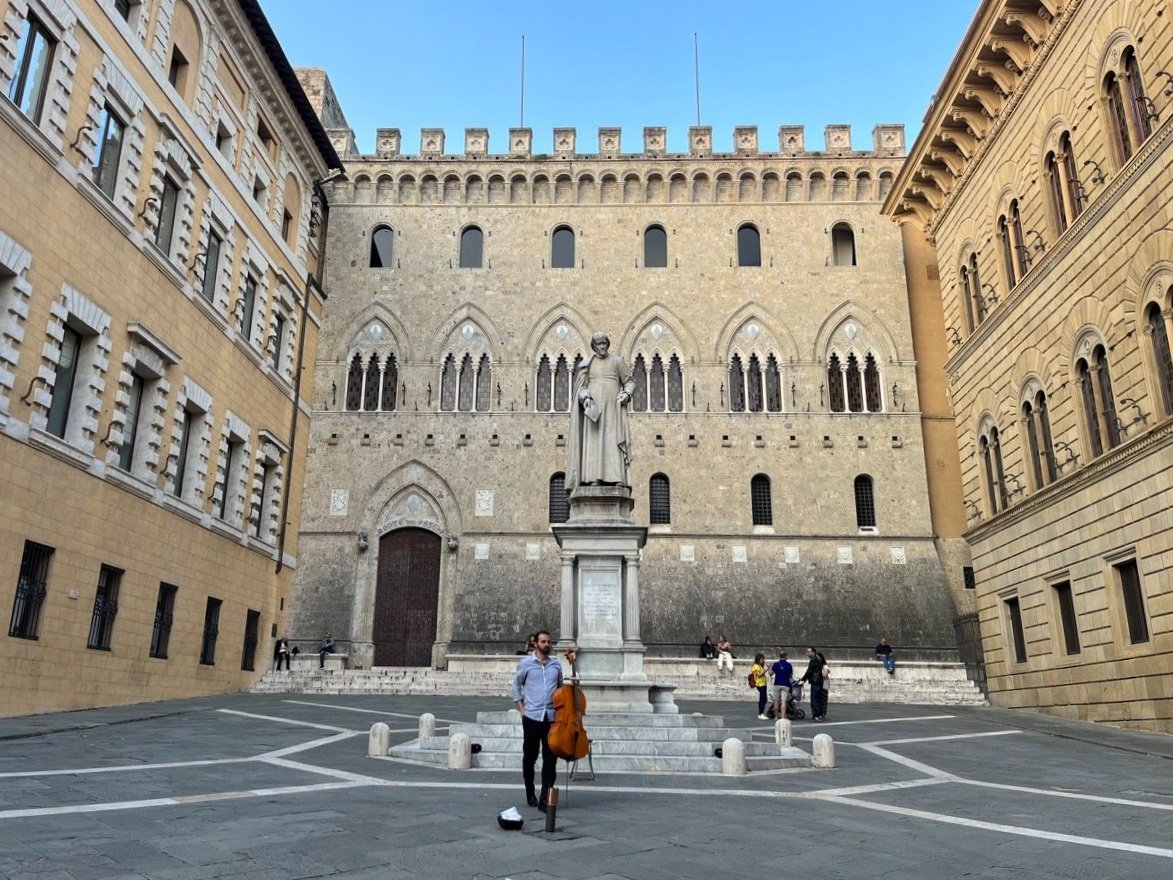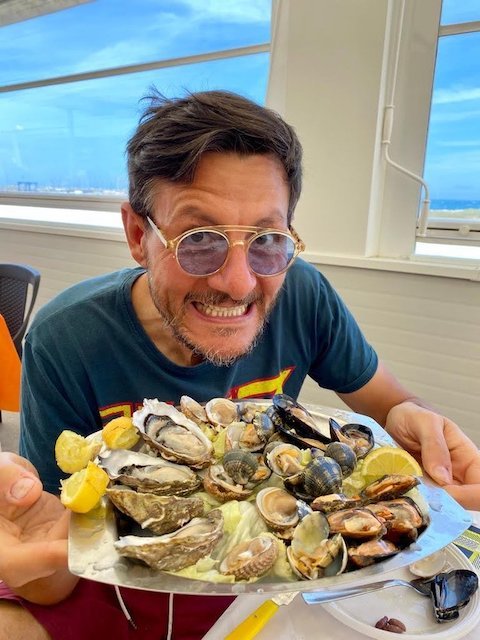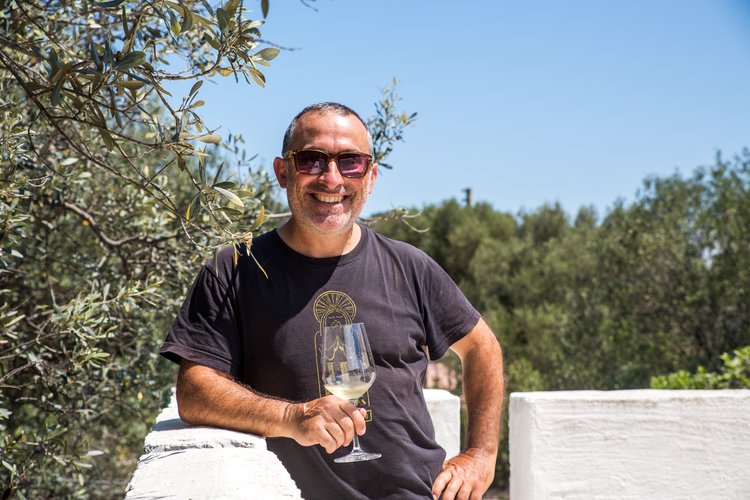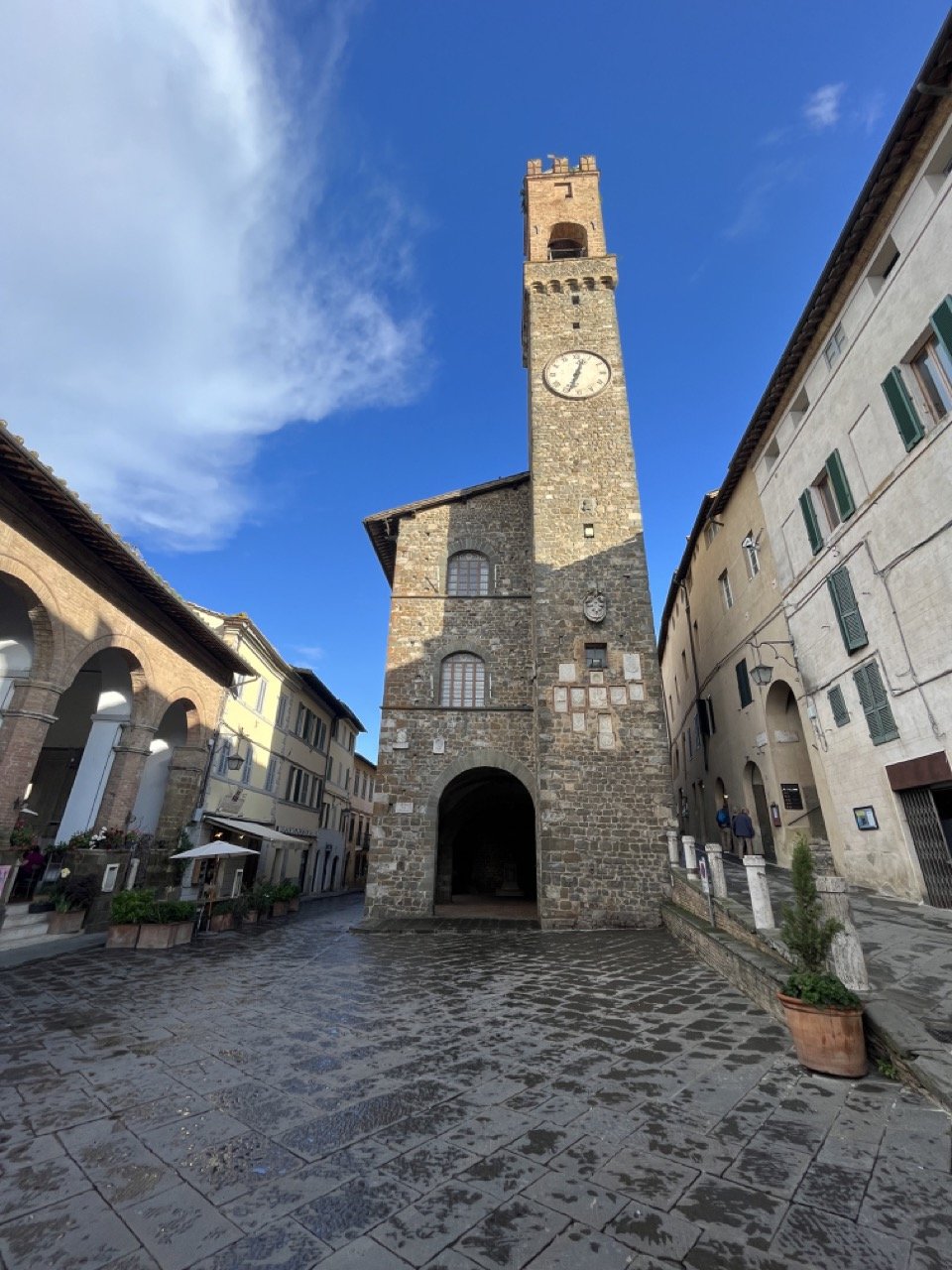One Week Tuscany Itinerary
Affiliate disclosure: some of the links in this article are affiliate links. If you book using one of them, we’ll earn a small commission. All of our info is free to read and free of ads, so we appreciate it!
Tuscany serves up everything you expect to enjoy in Italy: impressive art and architecture, beautiful landscapes, and delicious food and wine.
And while a week here is not enough time to see or do nearly everything that this region has to offer, it’s long enough to offer up a lovely introduction and to give you a taste of everything mentioned above.
With 7 days, you’ll have time to experience Florence and its Renaissance treasures, and then head south to medieval Siena, via the glorious countryside of the Chianti region.
From Siena, you’ll head on southeast to the famed Val d’Orcia, where you’ll cruise through scenic countryside and can experience small town life in Montepulciano, Pienza, Montichiello, and other ancient hilltop towns.
Finally, finish your trip back in the north of the region, touring Pisa, which has much more to offer than just the Leaning Tower.
After a very busy 7 days, you’ll be impressed, a little overwhelmed, and a bit in awe at the wonderful places you’ve just discovered. And without question, you’ll be ready to start planning another trip to explore the places you weren’t able to fit into this one!
Table of Contents
Tuscany planning cheatsheet
 Plan your itinerary with expert advice
Plan your itinerary with expert advice
- Book an Italy travel consultation with a local expert
 My favorite hotels in Tuscany
My favorite hotels in Tuscany
- Hotel Calimala - Gorgeous boutique hotel in Florence's historic center. $250-450 USD
- Locanda de Ciomp - Excellent value guesthouse in Florence. $150-200 USD
- Palazzo Ravizza - Lovely midrange option in Siena. $120-175 USD
- Castello di Fonterutoli - Delightful castle & winery resort in the Chianti countryside. $200-300 USD
- Meublé il Riccio - Historic property in the heart of Montepulciano. $160 USD
- La Casa Di Adelina - Charming B&B in the Val d'Orcia village of Montichiello. $130 USD
 Guided tours and activities
Guided tours and activities
 How to get around
How to get around
- Car rentals with DiscoverCars
- Train tickets from Trenitalia and Italo
- Bus routes via Autolinee Toscane, Sitabus, and Flixbus


What to know when planning your trip
Before we get into the itinerary, I want to cover some of the basic questions you probably have. So, I’ve given quick answers below to the main things I think you should consider as you start planning your trip.
For more detailed information on all these topics, have a look at my Tuscany travel guide and my article on the best places in Tuscany.
How long to spend
For a first visit to Tuscany you should plan on at least 5 days. However, if you want to see the region beyond just its major cities and most touristed highlights, give yourself 7-10 days.
5 days is enough time to see Florence, take a day trip to somewhere like Lucca or San Gimignano, hop through Siena and the vineyards of Chianti, and visit the Val d’Orcia. That’s a solid introduction.
If you have a week, I’d still visit these same places, but I’d dedicate a little more time to each of them so you’re not just rushing through. You could also fit in a visit to somewhere like Cortona or Pisa.
10 days is the ideal amount of time for a deeper exploration of the region. This would let you do all of the above and then get more creative, potentially visiting some lesser-known areas like the lovely Maremma coast or the northern section of the the Apennine mountains.
When to visit
Like with most of Italy, the best time for a visit to Tuscany is either the late spring or the early fall. My favorite two months are May and September.
Spring brings warm days, crisp evenings, and mostly sunny skies. By May, the threat of rain has mostly passed and daytime temperatures are perfect for sightseeing and being outdoors. Everything is green and bright, and it’s an ideal time for walks in the countryside, bike rides, picnics, and hanging out in squares and parks.
Florence is crowded year round, but spring is shoulder season for the rest of the region, meaning it’s pretty quiet and much less expensive than in summer or fall. Almost everything (hotels, tour operators, beach towns, etc.) that may close down for the winter is open by Easter, so you won’t miss out on anything either.
Fall offers many of the same upsides as spring, but with the added bonus of it being warm enough for beach days and, of course, the wine harvest. That said, early fall in Tuscany is not shoulder season - in fact September is still high season - so you should expect for high prices, booked out accommodation and activities, and lots of other travelers.
In summer, the entire region is very hot and cities and towns are packed with international visitors. The Tuscan coast, lesser-known to foreigners, overflows with vacationing Italians. Prices are high, attractions in the major cities will sell out and always have lines, restaurants will require advance bookings, and there will be people everywhere. It is definitively not my preferred time for a visit.
Winter in Tuscany can be cold, rainy, and dreary. The vibrant greens and golds of the Val d’Orcia are muted (or brown), the vines in Chianti have no leaves, and outdoor activities are not much fun in the rain and mud. If you’re just coming to visit cities, it can be an ok time to visit as you’ll have no crowds and things will feel much more local, but if this is your first time in Tuscany, you won’t get to enjoy it in all its glory.
Where to go on a first trip
My “must visits” for any first-timer in Tuscany are always Florence, Siena, Chianti, and the Val d’Orcia.
Florence was the cradle of the Renaissance and a beautiful city with some of Italy’s most important museums and art.
Siena is a charming medieval city that once rivaled Florence for power and is home to one of Italy’s most beautiful cathedrals.
Chianti is one of Europe’s most important wine regions and is a treasure trove of rolling vineyards, usually crowned by little stone villages.
The Val d’Orcia is quintessential Italy; elegant hilltop towns like Pienza and Montepulciano overlooking spectacular countryside.
No visit is complete without seeing these 4 places.
If you have more time, Cortona is a great little town, Lucca is a very pleasant city surrounded by pretty countryside, Pisa is iconic, the Argentario area has beautiful beaches, and Volterra and San Gimignano remain stunners despite how touristy they’ve become.
I've provided recommendations for where to base yourself each night in the itinerary, but for a detailed discussion on choosing the right bases for a trip to Tuscany, check out my guide on where to stay in Tuscany
How to get around
Getting around Tuscany is easy even for first-time visitors to Italy. Roads are in excellent condition and the only time you’re likely to have trouble driving is inside of cities and small medieval towns.
Public transport
Public transport in Tuscany is very good, if you stick to the cities. Once you get out into the countryside, your options become much more limited.
Train connections between the major cities are also pretty good and local buses cover most towns that the train doesn’t.
That said, getting into the countryside by public transport is essentially impossible and getting between cities and small towns is irritatingly time consuming. Getting around rural regions (like Chianti and the Val d’Orcia) is essentially impossible without a car.
If you’re planning on spending more than 5 days in the region (or significant time in small towns and countryside), I always recommend renting a car.
For trains within Tuscany, your main service provider is always Trenitalia.
For buses, a number of different companies provide services, but the 3 main ones are Tiemme, Autolinee Toscane, and Sitabus. Flixbus also runs some services.
While you could manage this itinerary with a combination of bus and train, you’d have to do a really meticulous job of lining up all your schedules. You also would not be able to get into the countryside.
Driving
For this itinerary to work with only 7 days, you’ll need to have a car once you leave Florence. Public transportation in the Tuscan countryside is ok, but it’s not very frequent, you’ll often have to make changes, and it won’t work if you have limited time.
If you don’t want to rent a car, you should plan on hiring a driver/guide for your visit to Chianti and for your 2 days in the Val d’Orcia.
Where to find a car rental
You’ll find all the major international car rental agencies in Tuscany as well as loads of local companies. Keep in mind though that you typically won’t find rental offices in small towns and will almost always have to go to a city, airport, or busy train station in order to pick up your car.
If you’re flying to Rome before heading to Tuscany, then picking up a car rental at Fiumicino airport when you land makes by far the most sense.
If you’re coming from elsewhere and intend to pick up your rental in Tuscany, you have the largest selection of cars and agencies in Florence and Pisa. This is where Tuscany’s two main airports are, so you have the most cars and usually also the best prices.
In Florence, you can rent directly at the airport or at Santa Maria Novella train station. In Pisa, all the rental agencies are at the airport.
You also have a few rental agencies in Siena, a couple in Arezzo, and a few in Chiusi (near to Montepulciano). If you’re coming off of a cruise ship or ferry, the port city of Livorno also has lots of car rental agencies.
To check prices and book, I recommend using DiscoverCars. It’s a car rental website that includes offerings from all the major international rental companies as well as lots of smaller local agencies, which often have much better pricing. You can often find great deals.
Itinerary overview
This itinerary is set up as a road trip once you leave Florence and it allows you to see Tuscany’s major highlights while also spending time in the countryside. It also allows for flexibility in case you want more or less time somewhere.
You being in Florence, where you’ll spend 2 days enjoying everything the city has to offer. From there, you begin your road trip, spending a day in the wonderful countryside, towns, and vineyards of Chianti. Your 4th day is dedicated entirely to Siena, but you could also do a half day and visit some other places too.
From Siena, you spend 2 days leisurely meandering through the towns of the Val d’Orcia, eating great food and soaking up wonderful views. The trip finishes in Pisa, visiting the Leaning Tower, but also enjoying the city beyond just this singular monument.
Day 1 - Florence: Uffizi museum, Duomo, and sunset from Piazzale Michelangelo
Day 2 - Florence: Accademia museum, Pitti Palace, and Oltrarno exploration
Day 3 - Road trip through the Chianti countryside
Day 4 - Full day to enjoy Siena
Day 5 - Road trip from Siena to Montepulciano, passing through the Crete Senesi and Val d’Orcia
Day 6 - Full day in the Val d’Orcia visiting towns like Pienza, Montichiello, and San Quirico d’Orcia
Day 7 - Pisa and the Leaning tower of Pisa
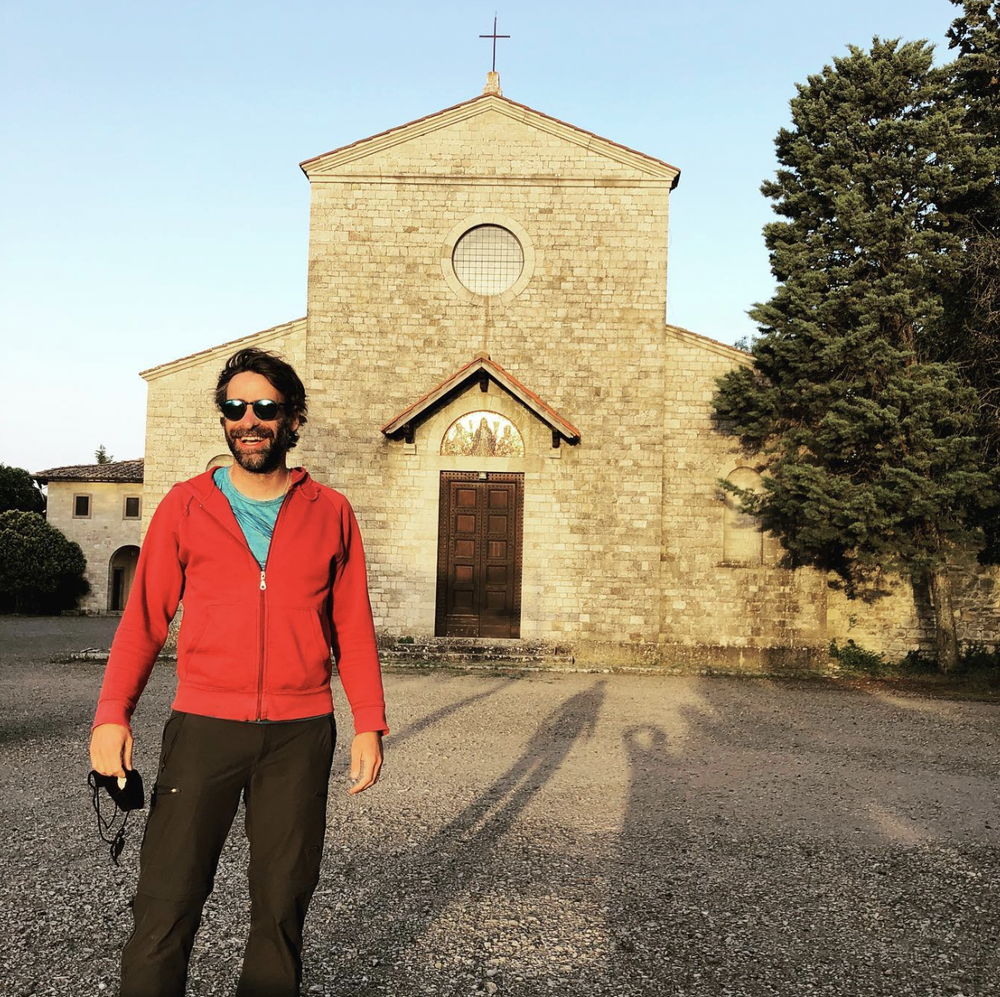

Day 1: Florence
For detailed info on the city, see our guide to Florence and 3-day Florence itinerary.
Florence
Morning - Uffizi Galleries and the Duomo
Galleria d’Uffizi
Begin your first morning in Florence at the Galleria d’Uffizi, erstwhile headquarters of the Medici banking empire and now stuffed to the rafters with the masterpieces of the Renaissance. In gallery after gallery you’ll encounter Botticelli, Michelangelo, Leonardo… this is one of the world’s great museums, so take your time and spend the entire morning here.
When you want to take a break from all the saints and swirling angels, head up to the view-filled rooftop café.
The Duomo
Next stop is another one of Florence’s great Renaissance achievements, the Duomo, the largest church in the world when it was completed around 1436, and topped with Filippo Brunelleschi’s dome that was also the largest in the world in its time.
The enormous cupola dominates the skyline of Florence, and climbing up narrow staircases wedged between the inner and outer shells is a not-to-be missed exertion, with acrophobia-inducing views at the top.
Il Battistero
Next door is the octagonal Battistero (Baptistry), where the East Doors, executed in gilded bronze by Lorenzo Ghiberti, depict 10 scenes from the Old Testament with such grace that Michelangelo said “They are so beautiful they would grace the entrance to Paradise.” They’ve been known ever since as the Gates of Paradise. The doors now in place are copies, and the originals are in the Museo dell’Opera del Duomo.
*For a great tour of the Duomo complex, we always recommend local guide Francesca.
A room in the Uffizi
Florence's Duomo
Afternoon - Historic center and the Accademia
Piazza della Signoria & the Accademia Gallery
Now do some more art-gazing, along with a late lunch and the best people watching in Florence, from the terrace of Rivoire or one of the other cafes on the airy Piazza della Signoria.
This center of city government, with the Palazzo Vecchio, the Medici’s stronghold, on one side, is filled with statuary - a line-up that includes city fathers, Greek gods, and a copy of Michelangelo’s David. After checking out the square and the statues, it’s time to see the most famous sculpture in the city, the original statue of David, which is housed in the Accademia Gallery, your next stop.
It’s about a 10 minute walk to the Accademia from the square, and once you reach the museum, you should expect to spend 1-2 hours checking out the masterpieces inside.
Piazza San Marco
After touring the gallery and seeing the original David, make the five minute walk over to Piazza San Marco. Here you’ll encounter another artistic genius, Fra Angelico, in the monks’ cells, the cloisters, and chapter house of a former convent that now comprise the Museo Nazionale di San Marco.
The good natured Dominican friar found time between his duties caring for the poor to cover the walls with magnificent frescos depicting religious scenes meant to inspire prayer and contemplation.
Piazza della Signoria. Photo: Zolli, CC BY-SA 3.0, via Wikimedia Commons. Cropped
Evening - a walk in Oltrarno
Ponte Vecchio & the Oltrarno
A walk at dusk takes you across the shop-lined Ponte Vecchio into the Oltrarno neighborhood on the other side of the Arno river. This artisans’ quarter is quite gentrified these days, but the narrow streets are still filled with artists’ studios, antiques shops, and fashion boutiques, along with many spots for an aperitivo and dinner.
One of the top choices is Osteria Dell’Enotecca, where modern Tuscan cooking is paired with a large choice of wines; dinner for two with wine is around 100 euros.
Ponte Vecchio
Overnight in Florence
Being one of the most visited cities in the world, Florence has a wide selection of hotel/accommodation options, but it’s worth mentioning that many of them, especially in the historic center, are pretty expensive. You can find cheaper options, of course, but that means heading a bit further out from the center - which is no problem, as public transit here is very good.
Below are a few of my favorite places to stay:
Hotel Helvetia and Bristol (450 euros)
Hotel Loggiato dei Serviti (160-300 euros)
Soprano Suites (180-260 euros)
Pensione Bencista (180 euros)
Day 2: Florence
For detailed info on the city, see our guide to Florence and 3-day Florence itinerary.
A view over Florence from San Miniato al Monte Abbey. Photo: Ввласенко, CC BY-SA 3.0, via Wikimedia Commons
Morning - Markets and churches
Mercato San Lorenzo & the Capelle Medici
You can’t come to Florence without shopping, so plunge into the Mercato San Lorenzo. Many of the leather goods here are made in China, but it’s hard to walk away without at least a change purse, for which you should bargain relentlessly.
Nearby are the Capelle Medici, housing the sumptuous sarcophagi that Michelangelo created for Florence’s ruling family.
Church of Santa Maria Novella & the world’s oldest pharmacy
Another treasure trove at this end of the Centro Storico is the church of Santa Maria Novella, covered with frescoes by Massaccio and Ghirlandaio. When the resident Dominican monks weren’t busy surrounding themselves with great art they were growing herbs with which they concocted similarly transcendent scents and soaps for their wealthy patrons.
The tradition continues and perfumes and other toiletries based on their recipes are on offer around the corner in the atmospheric Officina Profumo-Farmaceutica di Santa Maria Novella, said to be the world’s oldest pharmacy.
Now relax over lunch or a snack in the nearby Mercato Centrale, a covered food hall.
Santa Maria Novella church and square. Photo: Diego Delso, CC BY-SA 4.0, via Wikimedia Commons
Afternoon - Oltrarno, Palazzo Pitti, and the Boboli Gardens
A wander around the Oltrarno
Spend the rest of the day in the Oltrarno area. Make the crossing on the Ponte Santa Trinita, a bridge noted not only for its elegant beauty but also for the fact that what you see is a complete reconstruction. Retreating German troops blew up the original 16th century bridge in 1944, and in the 1950s workers painstakingly reconstructed the span with the original stonework dredged from the river bottom.
Your first stop over here is the church of Santa Maria del Carmine, where Massaccio painted the “Expulsion from Eden” and other frescoes in the Cappella Brancacci that are said to have set the stage for the Renaissance masters who followed him (quite a legacy for a young man who died at age 26).
Palazzo Pitti & the Boboli Gardens
A ten-minute walk through the streets of the Oltrarno brings you to the monumental Palazzo Pitti, a fittingly grand residence for the Medici dynasty. In the days before Louis XIV built Versailles this was the largest and most opulent palace in the world, and today the ornate salons are yet another Florentine repository of works by Raphael, Titian, Rubens, and other European masters, along with the furnishings that Medici dukes left behind.
Behind the massive palace stretch the Boboli Gardens, a lovely place to close out a day of sightseeing among ponds, fountains, and grottoes.
Palazzo Pitti
The central path in the Boboli Gardens
Evening - Sunset at Piazzale Michelangelo
Piazzale Michelangelo
Take a last look over Florence from Piazzale Michelangelo, in the hills above the Boboli Gardens. This is the city’s favorite spot for watching the sunset n- and with the Duomo gleaming in the slanting rays, what a sight it is.
If you haven’t tried bistecca alla Fiorentina, this is your last chance to try it in the namesake city. Head back across the river to the Santa Trinita neighborhood, where friendly, casual Osteria di Giovanni is said to grill the best steak in town. Dinner for two will be about 80 euros.
A view over Florence at dusk from Piazzale Michelangelo
Overnight in Florence
See hotel options from day 1 above
Day 3: Chianti and Siena
For more comprehensive info, see our Chianti travel guide and guide to Siena.
Morning - A drive through Chianti
Today, your final destination is Siena, but to get there, you’ll first pass through some of Tuscany’s most iconic countryside. You’ll definitely want a car for this drive, so pick one up in the morning and set out for Siena.
The distance from Florence to Siena is only 60km (37 miles) but you’ll want to take your time getting there and should be prepared to make plenty of stops.
A drive through Chianti - wine country
You’ll be crossing through Chianti, one of the most beautiful regions in Tuscany, a hilly landscape of vineyards, olive groves, stands of forests, and pretty stone villages.
The best, most scenery-filled road south from Florence through the heart of the region is the SR222, also called the Chiantigiana.
Along the way are dozens of wineries, many in historic castles, where you can taste the Chiantis and Super Tuscans that put the region on the wine map. Among them is the oldest winery in the world, Ricasoli, established in 1141 at Castello di Brolio outside Gaiole.
Stop off at Ricasoli Winery
This is the place where, in the mid-19th century, Barone Bettino Ricasoli came up with the blend for the region’s acclaimed Chianti Classico wines. Tours include a walk along the ramparts, with views across miles of vineyards and forests of oak.
You might also want to wander on and off the Chiantigiana road to take in the views from the hamlet of Lamole and to walk through Volpaia, San Gusme, and other charming medieval fortified villages still enclosed within their walls.
Lunch in Greve or Panzano
Stop for lunch in or around Greve. Local hams and cheeses are the focus at the Antica Macelleria Falorni, a butcher shop and bistro on the main square. Lunch for two with wine will be 30 euros or so.
Or, if you want more of a show, head out to Antica Macelleria d Cecchini in Panzano, where celebrity butcher/chef Dario Cecchini serves a tasting menu with flair, from 30 euros a person.
Chianti vineyard
The hamlet of San Sano in Chianti
A street in Radda in Chianti
Afternoon - Wine tasting in Chianti
After lunch, you’ll still have part of the afternoon to spend in Chianti, and tastings often top the list of activities here in one of Italy’s most famous wine regions.
Two more winery stops - Castello di Verrazzano and Castello Vicchiomaggio
Two historic wineries near Greve are Castello di Verrazzano, where the explorer Giovanni da Verrazzano (who discovered New York Bay) was born, and Castello Vicchiomaggio, where Leonardo da Vinci was once a house guest. Both produce well-regarded Chiantis and offer tours and tastings.
Castellina in Chianti - last stop before Siena
A final stop as you approach Siena is Castellina in Chianti, a lovely little village clustered around a Florentine castle. An atmospheric walk is along the Via delle Volte, an underground passageway in the town walls that was once a defensive lookout and from which you can enjoy views over the countryside.
From Castellina in Chianti, hop back in the car and continue on a final 30 minutes to Siena.
*If you’re interested in wine/vineyard tours in Chianti, Florence-based guide Stefano runs really neat, totally customizable experiences.
Evening - A stroll and dinner in Siena
Siena sights - the Campo and Torre del Mangia
Once you’ve settled into Siena, first stop is the Campo, the large, scallop-shaped piazza at the city’s heart. Until the plague of 1348 killed as many as half the city’s residents and brought an end to the city’s medieval heydays, Siena was one of the most important trade centers in Europe, as well as a stop on the Via Francigena pilgrimage route between Canterbury and Rome.
The Campo was built to impress with its harmony and grandeur, and the looming presence of the soaring Torre del Mangia. Soak in the ambiance over a cocktail or a glass of wine at an outdoor café overlooking the gracious space; they’re a little expensive, but the view and people-watching are worth it.
Dinner can be your introduction to homey Sienese dishes, along the lines of ribollita (bread and vegetable soup) and pici al cinghiale (pasta with a sauce of wild boar). A welcoming place to try them is Osteria dei Rossi, a neighborhood favorite near the Campo. Dinner for two, with wine, is about 60 euros.
Piazza del Campo
Piazza Salimbeni
A Siena backstreet
Overnight in Siena
Siena has tons of hotels to choose from, ranging from quite upscale to very budget friendly. Many of them are in converted old palazzi and are quite atmospheric.
Below are a few of my favorites:
Grand Hotel Continental (350-700 euros)
Campo Regio Relais (200-275 euros)
Il Battisero (110-160 euros)
Palazzo Ravizza (100-175 euros)
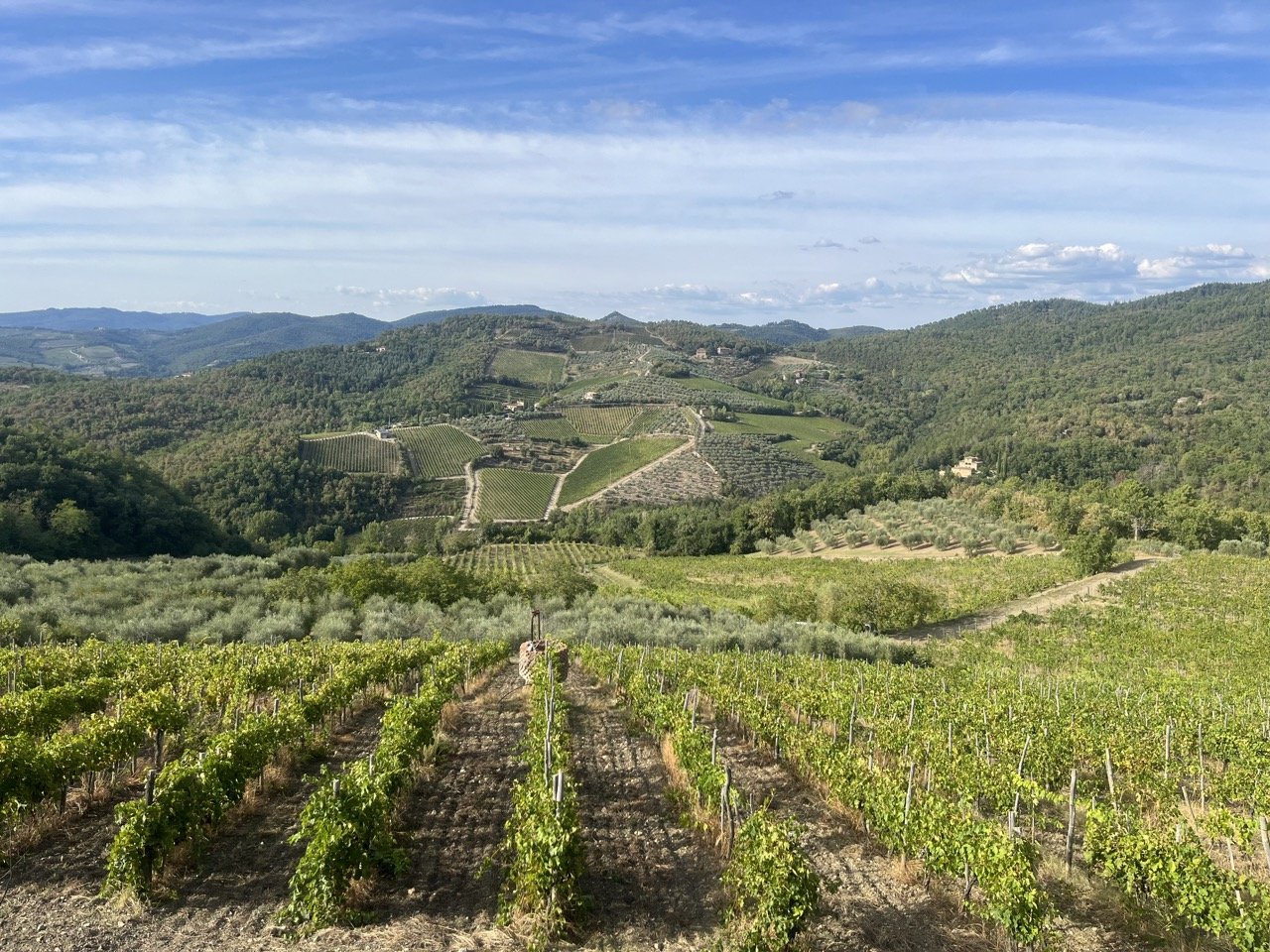
Day 4: Siena
For more info on the city, see our guide to Siena.
Morning - Siena's major monuments
Palazzo Pubblico
Return to the Campo to start the day. This time, step inside the Palazzo Pubblico to see Ambrogio Lorenzetti’s 1338 “Allegory of Good and Bad Government.” These remarkable frescoes may be under wraps for restoration, but some other notable works fill the halls.
Whether or not you feel the need to climb the 503 steps of the Torre del Mangia is up to you, but you can enjoy a better view from the Facciatone, an outlook above Piazza del Duomo, a little later.
Enjoy a coffee in one of the cafes surrounding the Campo, then take some time to wander at a leisurely pace to explore the streets that ring the space, Via di Citta and Via Banchi di Sotto, lined with the city’s finest shops.
Palazzo Salimbeni
Some of Siena’s most important medieval palaces are also in this district, and a short walk off Via Banchi di Sotto into Via Montanini brings you to the Palazzo Salimbeni. This Gothic, fortresslike palace was the stronghold of a powerful banking clan and is now the headquarters of the Banco dei Paschi, founded in 1472 and said to be the oldest bank in the world.
Basilica di San Domenico
A walk off the Campo shows off more of Siena, and, with a few ups and downs, brings you to the Basilica di San Domenico. Inside are the city’s most revered possessions, the severed head and thumb of patron Saint Catherine, and out front are pleasing views across the city and countryside.
Fontebranda
From the Basilica, head down toward some narrow lanes and stepped streets until you reach the 13th-century Fontebranda, a monumental waterworks with a series of pools, some that once supplied fresh drinking water and others that were used to water animals and wash clothes and textiles.
From here it’s a short but steep walk back uphill to the Campo.
Siena’s Duomo
Drummers preparing for Siena’s famous Palio race
Afternoon & Evening - Duomo di Siena
Now it’s time for lunch, either at a casual place like Gino Cacino d’Angelo, a panino shop behind flowering shrubbery on Piazza Mercato, or one of the many trattorias that cater to neighborhood locals.
Il Duomo, the Piccolomini Library, and the Baptistry
Linger over wine and coffee, then head back toward the Campo and follow the Via di Citta toward another great landmark of the medieval city: the soaring black-and-white striped Duomo, completed in the 13th century, is a showcase of Gothic architecture and would have been even larger had the Black Death not put an end to expansion plans.
Admire the church’s elaborately sculpted façade, then step into the vast interior, where treasures include a mosaic and marble floor, executed by the city’s great medieval and Renaissance masters to depict biblical scenes, and the beautifully frescoed Piccolomini Library, a repository of illuminated manuscripts.
The Baptistery is below the main church, with a separated entrance, and houses a baptismal font decorated with magnificently sculpted bronze panels and statuary.
Museo dell’Opera & the Facciatone
Part of the Duomo, left unfinished when the plague halted work in 1348, is now the Museo dell’Opera. More of the cathedral showpieces are here, including the Maesta, a magnificent altarpiece. This wing is topped with the Facciatone, a walkway on top of the façade that overlooks the city and countryside and is the city’s best viewpoint.
Another presence on the Piazza del Duomo is Santa Maria della Scala, a massive and impressive medieval complex built to house an infirmary, orphanage, and hospice for pilgrims. These activities are recorded in detail in colorful frescoes in the Sala del Pellegrino (Pilgrims’ Hall).
An evening passegiata
As dusk falls, join the Sienese in their passeggiata (evening stroll) through the Campo and along the shop-lined streets that skirt its perimeter. Then close out the day with a typical Tuscan dinner, which means pici or pappardelle pasta with a rich sauce, often followed by a grilled Bistecca alla Fiorentina.
These Tuscan classics are done to perfection at the brick-vaulted Taverna San Giuseppe; dinner for two about 80 euros, with wine.
*If you’d like to see Siena on a private walking tour, reach out to Serena who runs great tours.
Overnight in Siena
See hotel options from day 3 above
Day 5: Crete Senesi, Montalcino, and Sant’Antimo Abbey
For an overview of the greater region, have a look at our Val d’Orcia travel guide.
A view in the Crete Senesi
Morning - Scenic drive in the Crete Senesi and a visit to Montalcino
Get a fairly early start today and set out on another scenic drive, this one through the Val d’Orcia, a landscape of hills carpeted with golden fields and vineyards and topped here and there with storybook villages.
Your final destination is Montepulciano, and you could make the trip straight from Siena in a little over an hour, but it’s better to make a day of the journey with some meandering and stops along the way.
Road tripping through the Crete Senesi
So, today starts by heading south from Siena. Once you leave the city behind, you’ll quickly cross into a land of gentle clay-filled hills, known literally as the “clays of Siena”, or Crete Senesi. The stark hillsides offer a strikingly different landscape from those of Chianti and they eerily lonely and empty, with isolated farms appearing now and then.
An unexpected outpost of civilization in these so-called “badlands” is the charming and pretty town of Buonconvento, whose name derives from Latin for “happy place.” It sits along the ancient “Via Francigena”, a pilgrim’s route that runs from Canterbury, England to Rome. There’s not much to see in town, but it’s pretty and worth a 30-minute wander.
Another welcoming spot nearby is the Abbey of Monte Oliveto Maggiore, a huge medieval monastery that appears like a red-brick mirage among the gray hills. Inside is yet another Tuscan art treasure: a 36-scene fresco cycle that illustrates the life of St. Benedict in colorful detail.
Montalcino
Departing from the Crete Senesi area, your next stop is Montalcino, a walled medieval town where the surrounding vineyards produce the famous Brunello di Montalcino wines. The town itself is very small, so don’t expect to spend much more than an hour sightseeing. However, there are many good enotecas (wine bars) right in the center of town, and it’s always a good idea to stop in one and sample some wine.
An atmospheric setting in which to introduce yourself (but not your designated driver) to Brunello, and the slightly less distinguished Rosso di Montalcino, is the Enotecca la Fortezza, which is located inside the walls of Montalcino’s fortress. Your tasting will be accompanied by locally made cheeses and salamis, and the shop sells wines from throughout the region.
If you fancy visiting any wineries as well, Poggio Antico and Sasso di Sole are among the the ones just outside of Montalcino that offer tastings.
Montalcino’s main square
Vineyards near to Montalcino
Afternoon and evening - Sant’Antimo Abbey and Bagno Vignoni
Abbey of Sant’Antimo
Only 15 minutes away from Montalcino is the splendid Abbey of Sant’Antimo, a tranquil religious retreat of gleaming travertine stone and alabaster cradled in gentle hills. The Abbey is a masterpiece, so give yourself at least half an hour to enjoy it and its lovely location.
If you’re in the mood for a late lunch, you could grab a meal in the little hamlet of Castelnuovo dell’Abate.
Bagno Vignoni
From the Abbey, hop in the car make a pretty 30-minute drive to the hilltop town of Bagno Vignoni. A spa town in Roman times, the elegant main square surrounds the now decommissioned main bath, and is lined with nice restaurants. Thermal waters still run here, and you have free “wild” pools just on the edge of town as well as two hotel-spas in the center.
Bagno Vignoni itself is tiny - just a handful of streets, so you can easily see everything in 20 minutes. However, if you want a really unique experience, grab an early dinner in town at Osteria del Leone and then head over the Posta Marcucci hotel. You won’t be spending the night here (although you could…), but are visiting because throughout the summer and fall they offer the option of a “bagno sotto le stelle” (bath under the stars) where you pay for a nighttime entrance to their spa, and then get to use their open air pools for a few hours under the starry sky. It’s a lovely experience.
Onward to Montepulciano
Whatever you choose to do, from Bagno Vignoni your last journey is an easy 25 minute drive to Montepulciano, where you’ll be spending the next two nights.
You have some appealing choices among the hotels in the historic center of Montepulciano as well as pletny of agriturismi, quaint B&Bs, and smart countryside hotels in the rollings fields nearby.
*For tours of the Val d’Orcia (including wineries and the many charming towns), local guide Serena is based in Montepulciano and is fabulous.
The Abbey of Sant’Antimo
Bagno Vignoni’s main square
Bagno Vignoni
Overnight in/around Montepulciano
Montepulciano is quite small, but being a super popular destination, has plenty of hotels to choose from. Right within the town, I’ve included four options below that I quite like.
Palazzo Nobile di San Donato (300-400 euros)
Meublé il Riccio (120-200 euros)
Albergo il Marzocco (140-160 euros)
Osteria del Borgo (100-150 euros)
Day 6: Val d’Orcia towns
Read more about the region in our Val d’Orcia travel guide and our guide to Montepulciano.
Morning - A wander in Montepulciano
A morning wander through Montepulciano’s center
A day in Montepulciano, a very high hill town, begins with a climb up the steep main street. You can also begin at the top and walk down, but the walk up seems more sporting, plus you’ll save the grand finale, Piazza Grande, for the end. Take it slow (you’ll want to anyway) and admire the medieval and Renaissance palaces along the way.
You’ll also notice many wine shops and enotecas showcasing the town’s signature red wines, Vino Nobile di Montepulciano and Rosso di Montepulciano.
Part of the way up step into venerable Caffe Poliziano for a coffee (you can come back later for a glass or wine or a meal).
The climb ends in Piazza Grande, anchored by the bare-brick Cattedrale di Santa Maria Assunta and the heavily Gothic Palazzo Communale. You can ascend the tower of the Palazzo Comunale, but the views from the top of town are pretty impressive in themselves.
It will probably be late morning by the time you finish your walk, so it won’t be too early for a wine tasting, which you can do right here in the cellars of Contucci Cantine that burrow beneath Piazza Grande.
Piazza Grande in Montepulciano
Palazzo Comunale
The Temple of San Biaggio
Afternoon - Pienza and San Quirico d’Orcia
The Val d’Orcia
A tasting is a perfect prelude to a long lunch, and you’ll have a lot of choices just off the main square or anywhere in town.
After lunch, you should spend the rest of the day exploring the Val d’Orcia countryside and towns. You’ll have gotten a good taste of these beautiful landscapes yesterday on your way to Montepulciano, but it’s very much worth exploring on a second day too.
Pienza
From Montepulciano, hop in the car and set off to nearby Pienza, a pretty little town laid out in the 15th century as an ideal Renaissance city. Shops along the little lanes sell percorino (sheep’s milk cheese), honey, and other bounty from local farms.
Homey atmosphere aside, you will also encounter some regal grandeur in the palace where Pope Pius II retired in the 15th century. Views over the countryside are subline, too.
San Quirico d’Orcia
From Pienza, the SP146 road soon brings you to San Quirico d’Orcia, where stately gardens, the Horti Leonini, surround the church of Santa Maria Assunta. Just outside of town you’ll want to pull over to enjoy the views of the cypress-shaded lanes climbing the hillsides to the elegant little Chapel of Madonna di Vitaleta.
A wheat field in the Val d’Orcia after harvest
Chapel of Madonna di Vitaleta near Pienza
San Quirico d’Orcia
Evening - Dinner in Montichiello
Montichiello
From San Quirico, a pleasant way to plunge into the countryside is with a side trip along more cypress-lined roads to the tiny little village of Montichiello. The little town, surrounded by walls and huddling beneath stone towers, looks like the setting of a medieval fable.
Montichiello is so charming that you might want to stay for dinner at the Osteria la Porta; dinner for two with wine is about 70 euros. If you can’t get a table, Ristorante Daria is equally good.
Overnight in/around Montepulciano
See hotel options from day 5 above.
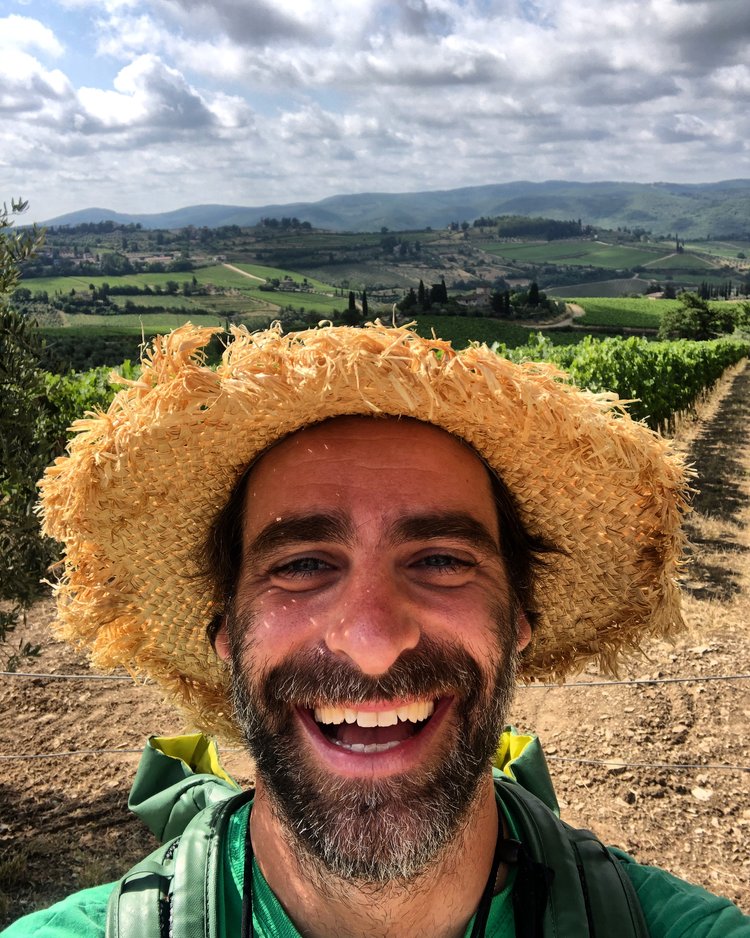

Day 7: Pisa
For detailed information, see our guide to Pisa.
Morning - The Leaning Tower
Your last stop in Tuscany is Pisa, which is a little over two hours away from Montepulciano, so you’ll want to get an early start today.
Best known for its iconic tower, probably the world’s most famous architectural blunder, Pisa is an attractive and appealing, though often-under-appreciated town.
Most visitors just come in for a quick photo with the tower, but the town has a charming medieval and Renaissance center that straddles the banks of the Arno River, near its mouth in marshlands on the Ligurian Sea. It’s quite nice and is worth a full day.
Assuming you arrive around late morning, begin at the city’s main attractions, the Piazza Del Duomo, also known as Piazza dei Miracoli (Square of Miracles) and Campo dei Miracoli (Field of Miracles). This is where you’ll find a host of the monuments that have made Pisa famous:
The Leaning Tower
The Leaning Tower is one of four great medieval monuments on the square, all sheathed in white marble and creating a harmonic spectacle (provided you overlook the parade of visitors posing for photos to make it look like they are propping up the marble structure (or leaning against it, or kicking it, the antics seem endless).
Il Cattedrale
The cathedral, with many tiers and arches showing off an exuberant Arabic influence, is where Galileo Galilei discovered the law of perpetual motion when he observed the swing of a bronze chandelier while sitting through lengthy services in the vast interior. It’s also said the he came upon his law of falling bodies - an observation that all objects fall downward at the same force - by dropping balls off the adjacent tower.
Il Battistero
Il Battistero, the largest baptistery in Italy, also leans distinctly, though less precipitously than its more famous neighbor. Guards will periodically demonstrate the perfect acoustics of the round structure by breaking into song, producing a melodic phenomenon.
The Camposanto
In the Camposanto, laid out on soil the Crusaders brought back with them from the Holy Land, Pisa’s medieval nobles rest for eternity in sculpted sarcophagi lining a Gothic cloister, decorated in part with frescoes depicting the Last Judgement and other sobering themes.
Pisa from above. Photo: Arne Müseler / www.arne-mueseler.com, CC BY-SA 3.0 DE, via Wikimedia Commons
The Baptistery
Campo Santo
Afternoon and evening - Pisa away from the crowds
Orto Botanico
Don’t overlook the rest of this attractive and historic city, but before you do more exploring, take a breather in the Orto Botanico. The first university botanical garden in Europe, founded In 1544, is full of flowers and plants from around the world that flourish in greenhouses and well-tended beds laced with fountains and ponds.
Piazza dei Cavalieri & Borgo Stretto
The nearby Piazza dei Cavalieri was the seat of government when Pisa was one of the world’s most powerful empires. Officials met in the Palazzo del Popolo e degli Anziani (The Palace of the People and the Elders), while the statue of Cosimo I Medici in the middle of the square appeared when Florence conquered Pisa in the early 1500s.
Borgo Stretto, a lively shopping street lined with Renaissance palaces, leads through the old city. An especially colorful spot is Piazza delle Vettovaglie. The name means “provisions” and a 16th-century loggia still shelters a fish and vegetable market and is surrounded by appealing cafes and restaurants.
The graceful Ponte di Mezzo crosses the Arno and provides a good view of one of the city’s most elegant churches, the Gothic-style Chiesa di Santa Maria della Spina, wedged onto the south bank.
Corso Italia
Shop-lined Corso Italia continues into the modern city, where one of the more surprising sights is the Tuttomondo mural, painted by the American street artist Keith Haring in his distinctive pop art style.
For dinner, head back across the river to the medieval center, where Osteria dei Cavalleri serves specialties, including seafood from the nearby, coast, in atmosphere-rich rooms; dinner for two about 80 euros.
After dinner, stroll over to the Campo dei Miracoli to see the spectacle of the monuments floodlit at night.
Overnight in Pisa
Pisa is most often visited as a day trip, with folks departing as evening sets in. That’s good news for you if you stay overnight here, as the rates are a fair deal cheaper than what you’ll find in other popular Tuscan cities and towns.
Below are a few good hotel choices:
Palazzo Cini (170-200 euros)
Hotel Bologna (100-120 euros)
Hotel Roma (90-120 euros)
Royal Victoria Hotel (80-120 euros)
More Tuscany itineraries
5 day Tuscany itinerary with Chianti and Val d’Orcia
Days 1-2: Explore Florence
Day 3: Florence to Siena. Spend the day in the Chianti countryside visiting Panzano and Castellina, and having lunch and a wine tasting at a winery. Arrive to Siena in the late afternoon and visit the Duomo di Siena before enjoying an evening strolling around town.
Day 4: Siena to San Quirico d’Orcia, passing through the Crete Senesi landscapes and the town of Montalcino on your way. While in Montalcino, enjoy a pleasant walk/hike to the nearby Abbey of Sant’Antimo. In the evening, head to the town of Bagno Vignoni to soak in thermal waters under the stars at the Posta Marcucci spa.
Day 5: Hop between the towns of Pienza, Montepulciano, and Montichiello. Make time for a good lunch in one of the towns, or at a local farm or vineyard in the surrounding countryside. If you have extra time, you could include an evening in Cortona.
This itinerary lets you see Florence, visit the Chianti countryside, spend a night in Siena, and see a nice bit of the Val d’Oria. You’ll get to see some of the world’s greatest art in Florence, do wine tasting in Chianti, spend an evening wandering around medieval Siena, and then hop between hilltop towns in the Val d’Orcia.
It’s a concentrated dose of quintessential Tuscany delivered very efficiently.
5-day Tuscany itinerary with Lucca and San Gimignano
Days 1-2: Explore Florence
Day 3: Florence to Siena with the most of the day dedicated to exploring the small towns and vineyards of the Chianti countryside. You’ll arrive to Siena with time to climb the Torre del Mangia tower and visit the Duomo
Day 4: Siena to Lucca with stops in San Gimignano, Volterra, and Pisa along the way. Enjoy the evening in Lucca
Day 5: Spend the morning seeing Lucca and then head back towards Florence, stopping in the city of Pistoia on your way
This itinerary functions as a loop and covers many of Tuscany’s most famous places. You’ll begin with 2 days exploring Florence before heading southwest to Siena. On your way to Siena, you’ll have time to explore 2 or 3 of the towns of the Chianti wine region and stop for a wine tasting or two at a vineyard.
From here, you road trip through western Tuscany, spending a couple of hours in San Gimignano, Volterra, and Pisa en route to the charming city of Lucca. The route finishes back up in Florence after a morning in Lucca and an afternoon in the pretty and little-visited city of Pistoia.
5-day Tuscany itinerary with Cinque Terre and Cortona (doable without a car)
Day 1: Explore the cities of Cortona and Arezzo, overnighting in Arezzo
Days 2-3: Soak in all the culture and art in Florence
Day 4: Enjoy an entire day in the city of Lucca
Day 5: Take a day trip from Lucca to the Cinque Terre
This itinerary is the only one on the list that can be done entirely with public transport. All of the cities/places on this itinerary lie on a major train route, meaning you can move from one city to the next easily and with multiple daily departures.
You start off spending the morning and early afternoon exploring Cortona, learning about the Etruscans, and enjoying splendid views over Lake Trasimeno before carrying on to the charming and mostly unknown city of Arezzo for the evening (1 hour by train). From Arezzo, you’ll hop an early morning train to Florence, your base for the next 2 days.
After Florence, you’ll spend 2 days in Lucca, 1 dedicated to exploring the city and the other used as a day trip to the Cinque Terre.
7-day Tuscany itinerary with Monte Argentario and Maremma coast
Days 1-2: Florence
Day 3: San Gimignano, Volterra, and Monteriggioni
Day 4: Siena
Day 5: Siena to Monte Argentario, passing through the Crete Senesi and the town of Buonconvento
Days 6-7: Monte Argentario and Maremma coast beaches
Here you have an idea for spending a week in Tuscany that combines 4 days of sightseeing with 3 days relaxing by the seaside. Your first 4 days visit some of Tuscany’s most famous places, including Florence, San Gimignano, and Siena.
On your 4th day, you’ll leave Siena and drive through the scenic Crete Senesi badlands on your way to Monte Argentario, a peninsula in Tuscany’s south famed for clear turquoise waters and dramatic coastline. Although popular with Tuscans, very few foreign tourists visit the area.
If you get bored with just beach lounging, the small cities of Pitigliano and Grosseto are pleasant places to spend a morning or afternoon in, and there are plenty of other nearby towns to check out as well. However, you’ll probably be very happy with the beaches!


More Tuscany travel info
For more advice on planning your trip to Tuscany, check out some of our other guides and itineraries!
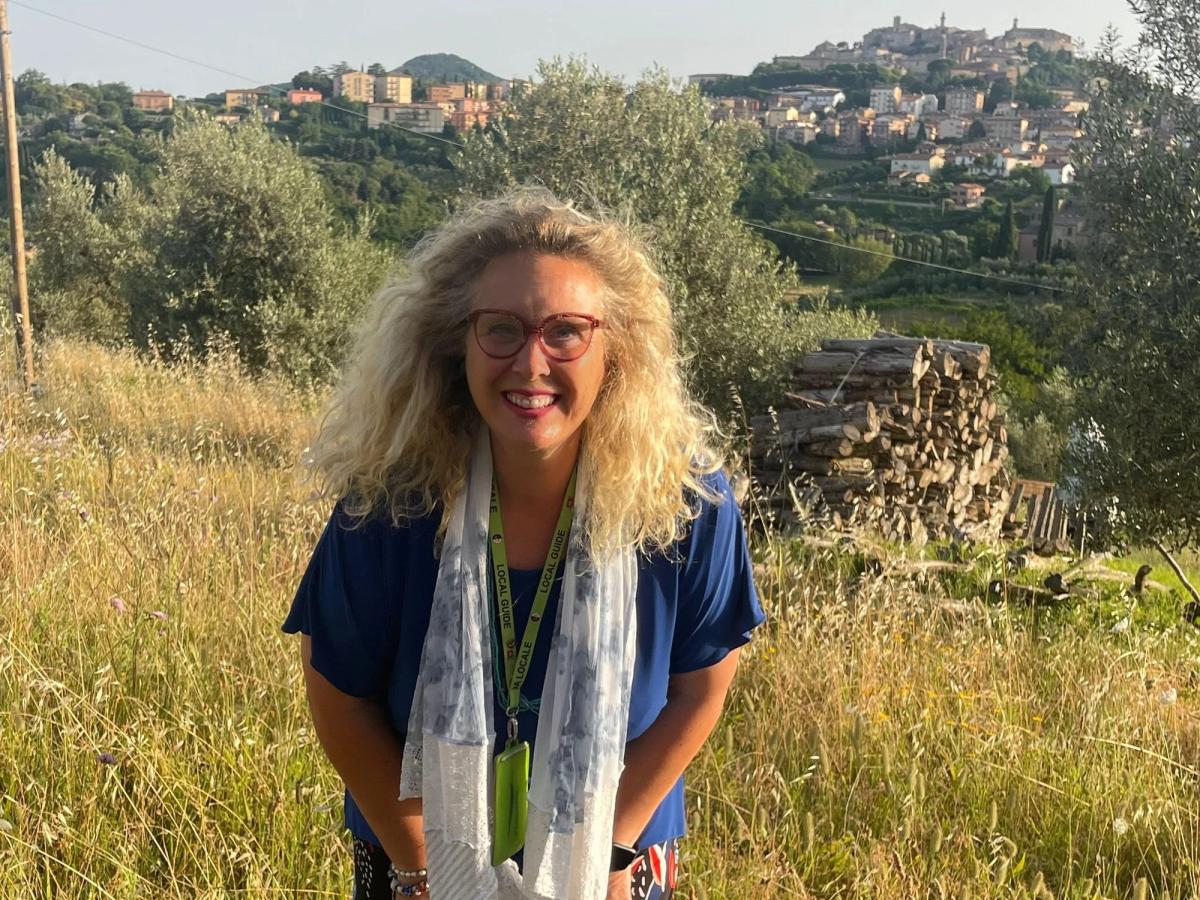
Serena Baglioni
Tuscany Expert based in Montepulciano
Ciao ragazzi! 👋
Hi, I'm Serena, and I've been a tour guide and travel consultant here in Tuscany for the last 25 years. If you're looking for some local advice on your trip, I'd love to help!
Learn more Book a consultation


















